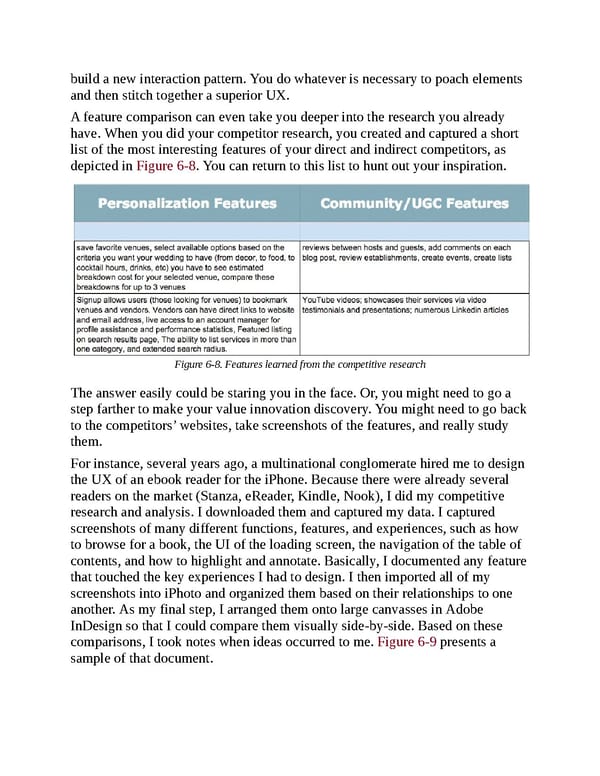build a new interaction pattern. You do whatever is necessary to poach elements and then stitch together a superior UX. A feature comparison can even take you deeper into the research you already have. When you did your competitor research, you created and captured a short list of the most interesting features of your direct and indirect competitors, as depicted in Figure 6-8. You can return to this list to hunt out your inspiration. Figure 6-8. Features learned from the competitive research The answer easily could be staring you in the face. Or, you might need to go a step farther to make your value innovation discovery. You might need to go back to the competitors’ websites, take screenshots of the features, and really study them. For instance, several years ago, a multinational conglomerate hired me to design the UX of an ebook reader for the iPhone. Because there were already several readers on the market (Stanza, eReader, Kindle, Nook), I did my competitive research and analysis. I downloaded them and captured my data. I captured screenshots of many different functions, features, and experiences, such as how to browse for a book, the UI of the loading screen, the navigation of the table of contents, and how to highlight and annotate. Basically, I documented any feature that touched the key experiences I had to design. I then imported all of my screenshots into iPhoto and organized them based on their relationships to one another. As my final step, I arranged them onto large canvasses in Adobe InDesign so that I could compare them visually side-by-side. Based on these comparisons, I took notes when ideas occurred to me. Figure 6-9 presents a sample of that document.
 UX Strategy: How to Devise Innovative Digital Products that People Want Page 154 Page 156
UX Strategy: How to Devise Innovative Digital Products that People Want Page 154 Page 156